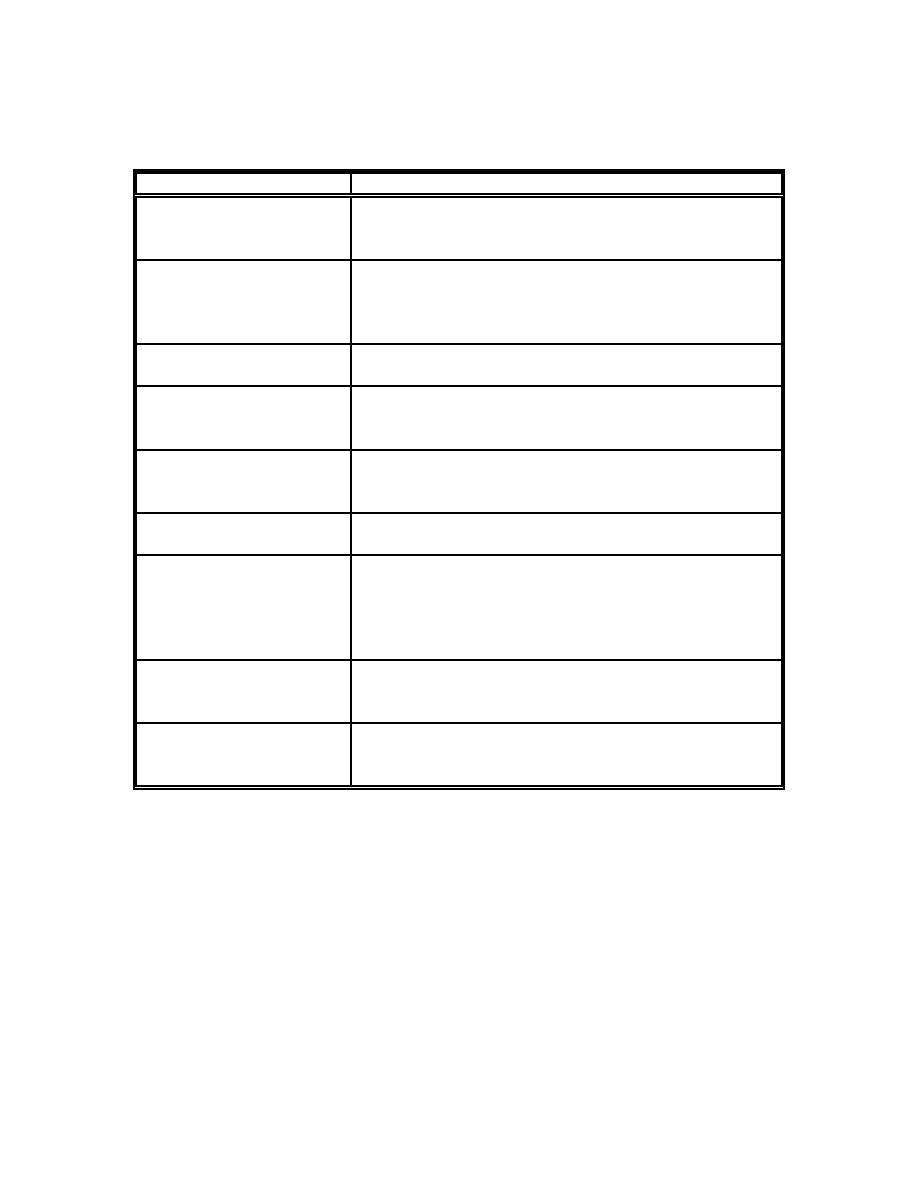
UFC 4-159-03
3 October 2005
Table 3-2. Basic Mooring Design Approach With Known Facility for
a Specific Site and a Specific Ship
STEP
NOTES
Define customer(s)
Define the ship(s) to be moored, the type of service
requirements
required, the maximum allowable ship motions, and
situations under which the ship will leave.
Determine planning
Define the impact/interaction with other facilities
requirements
and operations, evaluate explosive arcs, determine
permit requirements, establish how the mooring is
to be used, review the budget and schedule.
Environmental Impact
Prepare any required studies and paperwork.
Assessments
Determine the water depth(s), engineering soil
Define site and
parameters, design winds, design currents, design
environmental
waves, design water levels, and evaluate access.
parameters
Ship characteristics
Find the characteristics of the ship(s) including sail
areas, drafts, displacements, ship mooring fittings,
allowable hull pressures, and other parameters.
Ship forces/moments
Determine the forces, moments, and other key
behaviors of the ship(s).
Evaluate mooring
Evaluate the alternatives in terms of safety, risk,
alternatives
cost, constructability, availability of hardware,
impact on the site, watch circle, compatibility,
maintenance, inspectability, and other important
aspects.
Design Calculations
Perform static and/or dynamic analyses (if required)
for mooring performance, anchor design, fender
design, etc
Notifications
Prepare Notice to Mariners for the case of in-water
construction work and notify charting authorities
concerning updating charts for the area.
18



 Previous Page
Previous Page
